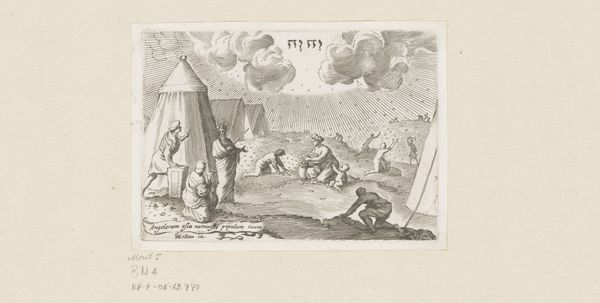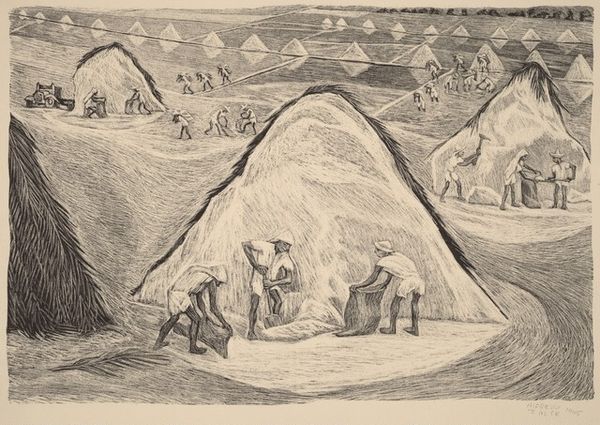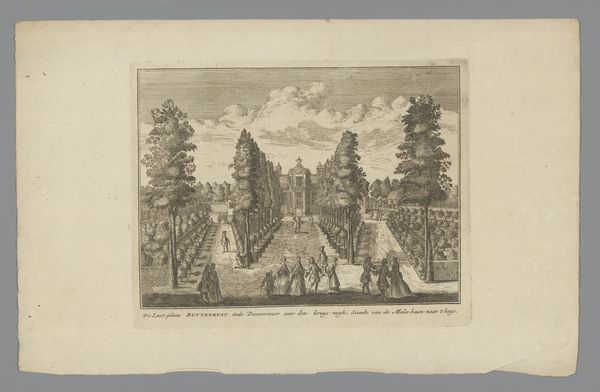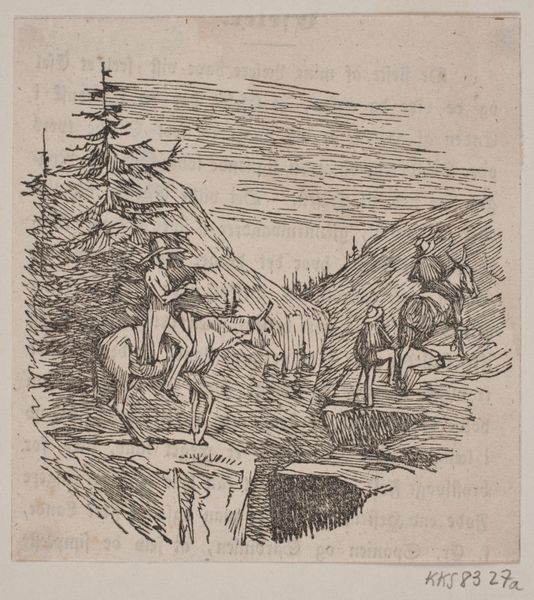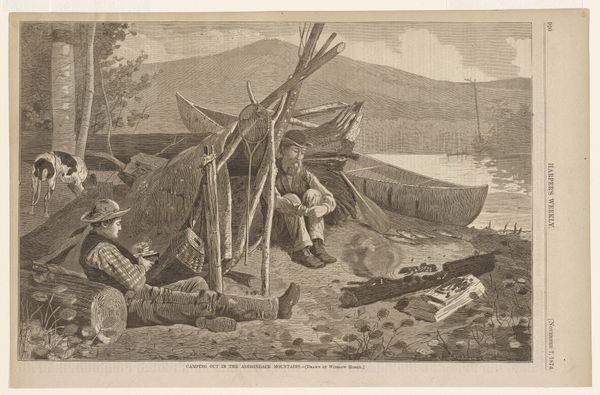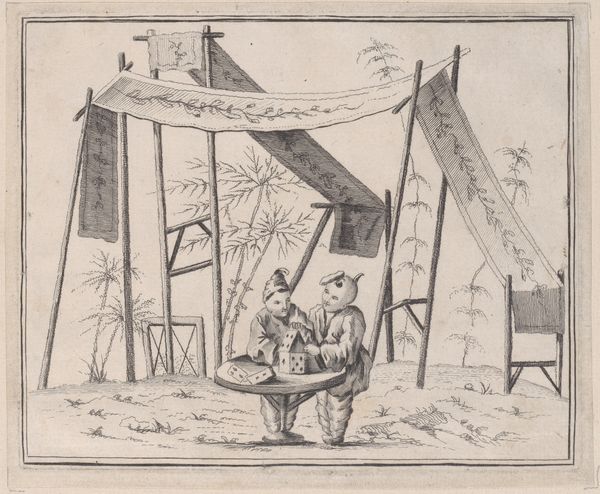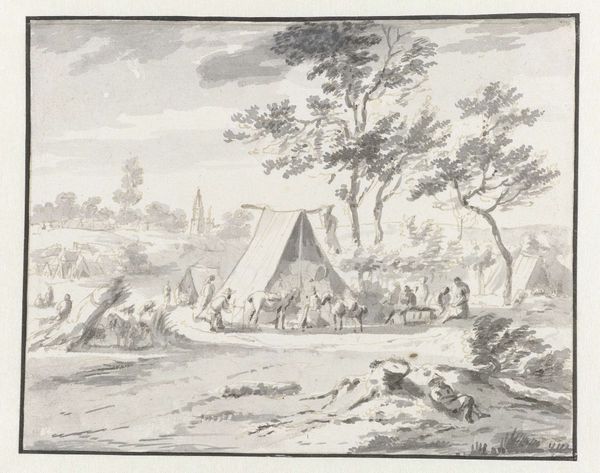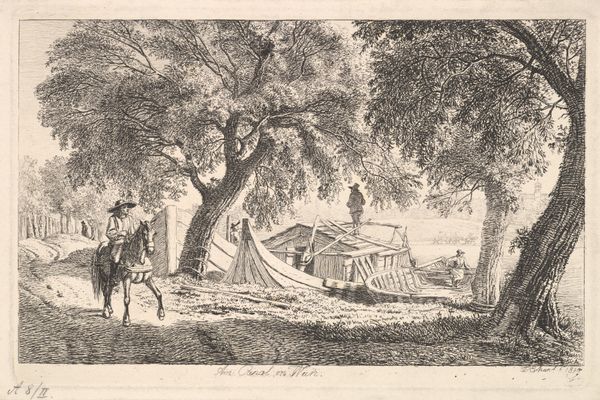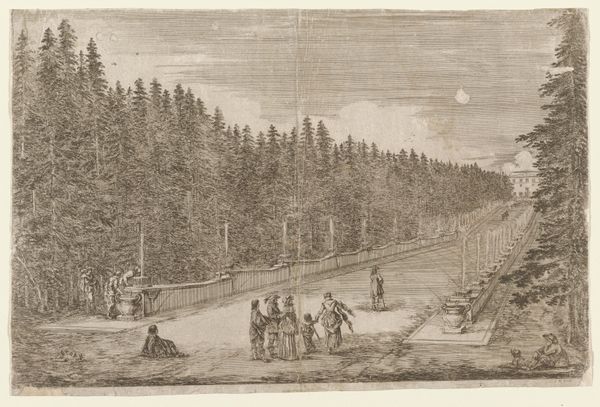
A Lapland Hut (Aubry de La Mottraye's "Travels throughout Europe, Asia and into Part of Africa...," London, 1724, vol. II, pl. 38) 1723 - 1724
0:00
0:00
drawing, print, ink, engraving
#
drawing
#
baroque
#
pen drawing
# print
#
landscape
#
figuration
#
ink
#
northern-renaissance
#
engraving
Dimensions: sheet: 9 15/16 x 13 1/2 in. (25.2 x 34.3 cm)
Copyright: Public Domain
Curator: Here we have "A Lapland Hut," a pen and ink drawing, or rather, a print derived from one, dating back to around 1723-1724. It’s after William Hogarth, from Aubry de La Mottraye's “Travels.” My eye is immediately drawn to its stark geometry within an almost fantastical natural setting. Editor: There's a wonderful balance between the constructed and the organic, certainly. I find the etching, in its painstaking detail, revealing much about the materials involved in Lapland life. From the reindeer hides and what looks to be wood used to construct the titular hut, to the tools of survival—I wonder what kind of labour went into fabricating and using them all. Curator: Yes, observe the sharp contrast of the perfectly conical dwelling, a precise form in the foreground. That hut provides such strong angular contrast to the sprawling landscape it punctuates. I notice too how all lines, emanating from that cone shape, guide the viewer’s eye. Editor: And beyond just sight, the materials almost evoke different textures—that stiff covering, perhaps hide or heavy woven textile, against the smoky fire burning within the hut and the various foliage of the distant, wild landscape, and, as well, a sense of coldness in the northern territory, one we, too, can nearly feel as we look upon the landscape, dotted with small figures tending to tasks necessary for subsistence. It really showcases resourcefulness in utilizing all available things around you, too. Curator: Note the use of engraving techniques to differentiate texture, simulating light and shadow that contributes to its distinctive dramatic intensity typical of the baroque, despite what you said, those details feel much closer to a sort of renaissance landscape. Its semiotic representation offers an imagined northern world for its British viewers. Editor: It underscores how inextricably linked those seemingly romantic vistas really are to practical everyday survival in often harsh conditions. Hogarth, or rather, the engraver who followed him, captured not just the 'exotic,' but the labor intrinsic to crafting a life and a home in this unique location, a place that must demand constant maintenance, renewal, and mindful use. I notice it’s difficult to define it, what's a scene and what is craft; maybe we need a new lens here. Curator: Certainly a work of careful thought and even imagination in its conception and rendering. It presents an idealised, constructed vision. Editor: Absolutely, it’s compelling, both in what it chooses to show and what that alludes to regarding lived realities of the area. A potent visual document of labour and locale intertwined.
Comments
No comments
Be the first to comment and join the conversation on the ultimate creative platform.
